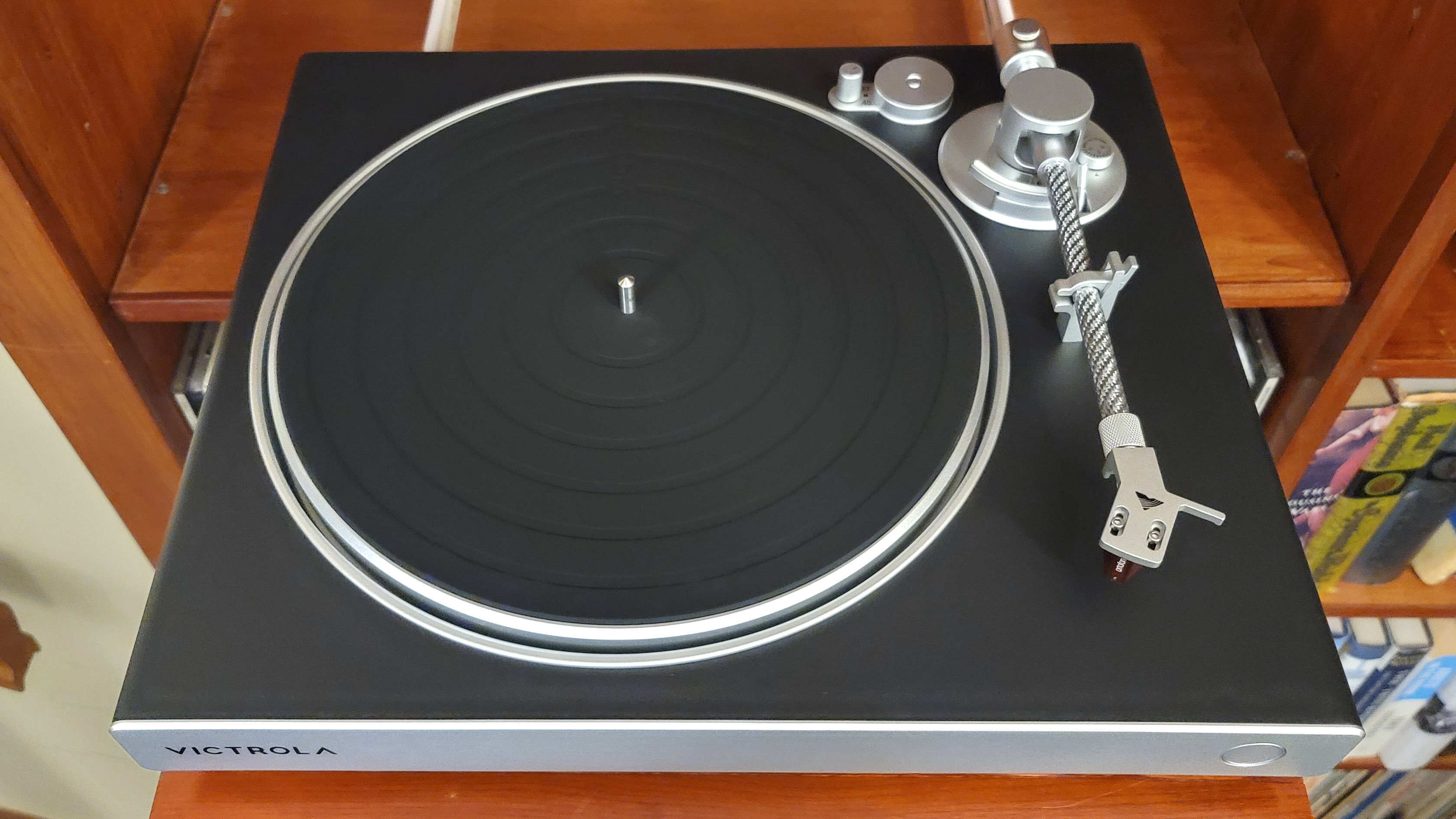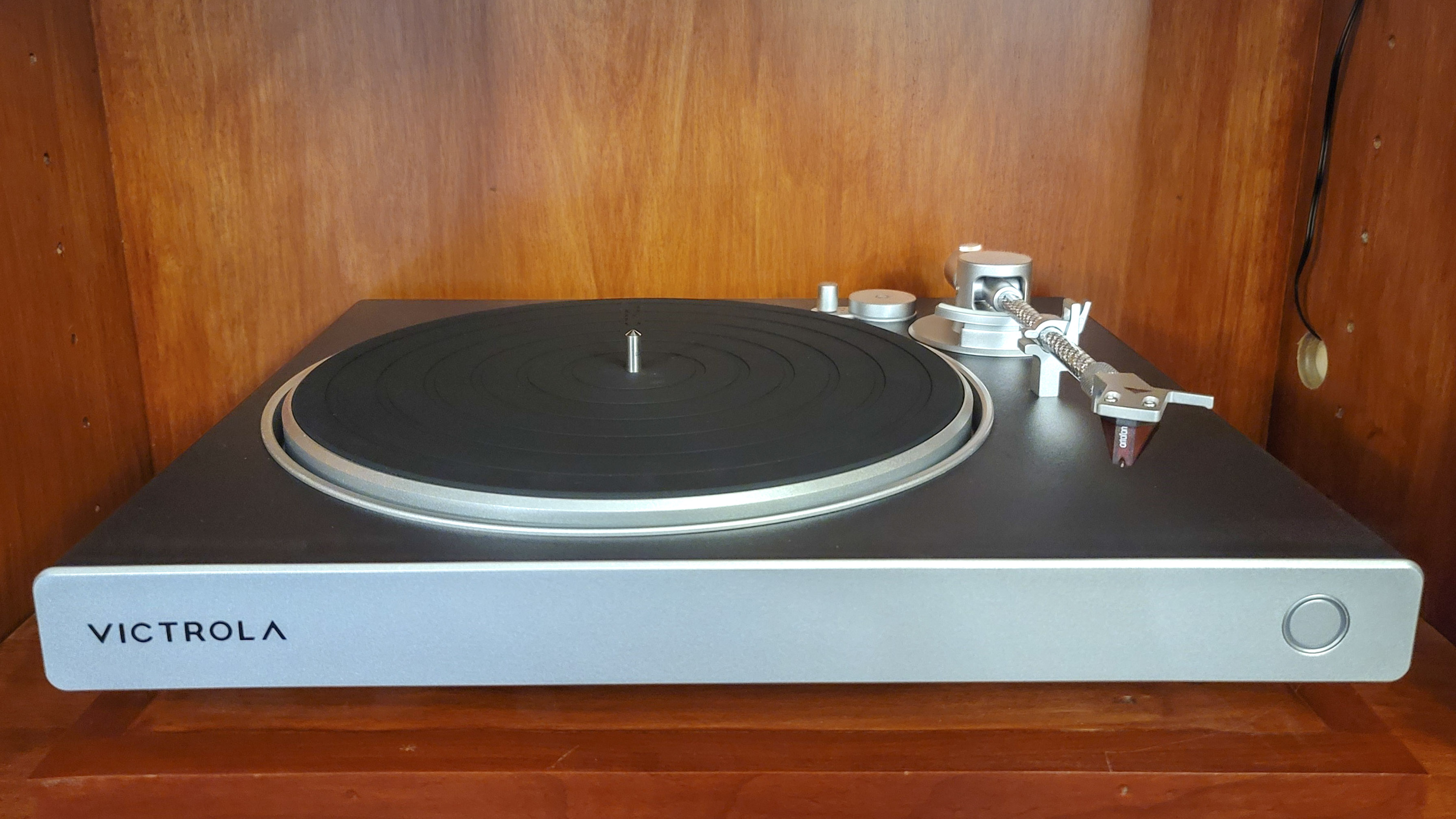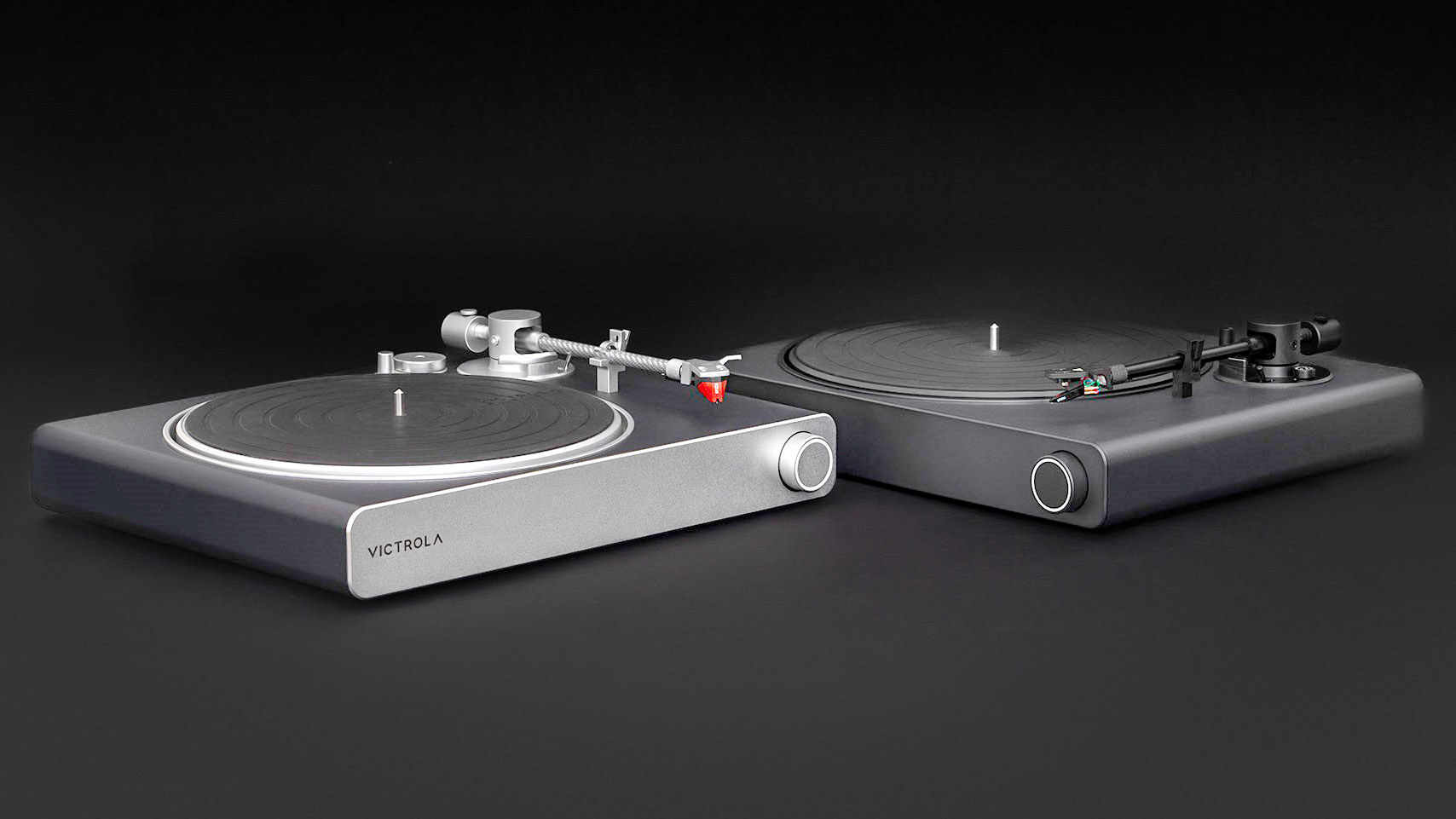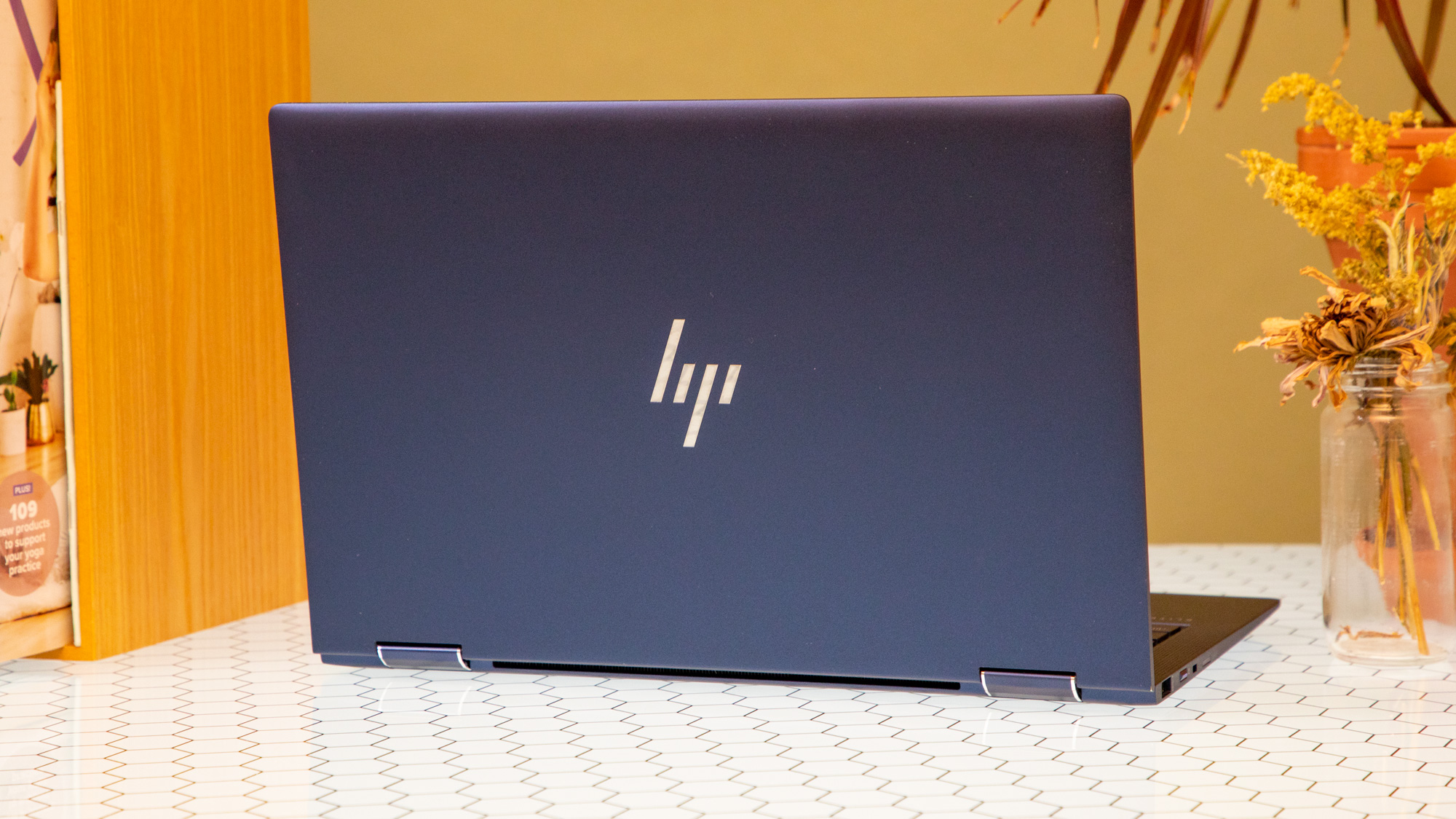This Victrola Bluetooth turntable got me playing vinyl again after 5 years
I'm back spinning records

Despite coveting several of today's best record players, I confess that prior to the arrival of the Victrola Hi-Res Carbon turntable, I have not listened to any of the 500 or so records I own for at least five years. My collection of vinyl occupies several basement bookshelves and has been slowly gathering dust.
You see, while I enjoy listening on my Dual turntable, Sherwood analog receiver and Acoustic Research speakers, records can’t compete with best music music streaming services when it comes to playing songs on demand.
That all changed when I started listening to the Victrola Hi-Res Carbon turntable. The name might be a throw-back, but this is no relic and combines traditional hi-fi conventions with modern wireless connectivity. It made me rediscover my old record collection and even listen to new vinyl.
This Victrola turntable made me rediscover my old record collection and even listen to new vinyl.
The Victrola Hi-Res Carbon Turntable is priced at $599. It's available from the Victrola website and is also on sale at online retailers including Amazon. It's more expensive than our audio editor's selection of best budget turntables, but comes with an Ortofon 2M Red moving-magnetic cartridge ($99) fitted to the carbon fiber tonearm with a removable head shell. This gives it proper audiophile credentials to warrant the higher price tag, but the company also sells a $399 Hi-Res Onyx version fitted with an aluminum tonearm and less expensive Audio-Technica AT-VM95E cartridge ($69).
The Victrola turntable has a traditional plinth made from medium density fiberboard, a die-cast aluminum platter and a silicon platter mat. It sits on stout black rubber isolation pads and has a tonearm lever to lower and raise the stylus from the record's surface. The turntable’s motor can be set to turn off at the end of the record, but the Hi-Res Carbon turntable doesn’t automatically lift the stylus off the record when it reaches the run out groove at the center of the record.

The belt-driven record deck is able to play 33RPM or 45RPM discs and includes a 45 adapter for singles where the center has been removed. It lacks a strobe and pitch control adjustment of direct-drive turntables by the likes of Technics and Audio-Technica, but the electronic motor has a built-in sensor that monitors the turntable’s speed and makes automatic corrections on the fly.
The carbon element in the Hi-Res Carbon turntable is the lightweight carbon fiber tonearm. Under the turntable’s gray and black skin, there's a pair of RCA analog connections at the back and it comes with a gold-plated interconnect cable. The turntable has a built-in phono stage preamp that can be turned on or off.
Spin me up

Setting up the turntable took me about 10 minutes with the hardest part being installing the drive belt onto the turntable’s pulley and platter. After connecting and tightening the head shell onto the carbon fiber tonearm, I installed the counterweight using the indented line as a guide. I finished up by making some anti-skate and fine adjustments to its position with a downforce balance that I hadn’t used in years.
I quickly reacquainted myself with The Beatles’ Abbey Road album, with its clear vocals, solid backbeat and rich midrange tones. The pops, skips and static came through just as clearly, making it like finding an old friend with a few new wrinkles, but just as artistic and dynamic.
While it worked fine on the first try with the analog cable connected to my hi-fi setup, a quick press of a button and I was streaming vinyl to my wireless earbuds, and later to my soundbar via Bluetooth 5.4 with support for 24-bit/48kHz using aptX Adaptive. The 65-foot Bluetooth range meant that the Victrola was ideal for next-room listening.
I started with an old school analog setup with my receiver and speakers and a fresh copy of Bruce Springsteen’s VMP remastered Nebraska album. The audio was hum- and feedback-free and a joy to listen to, particularly the emotionally charged “Mansion on the Hill” with its bright harmonica solos that blend with Bruce’s rasping voice and light background acoustic guitar strumming. It all came together with the eclectic energy of the Chuck Berry style guitar riffs on “Used Cars” where the raucous music blasted through loud and clear.
Next, I used my Edifier R1280T powered speakers with the RCA cables and an original pressing of the Beatles’ Abbey Road album. I quickly reacquainted myself with its clear vocals, solid backbeat and rich midrange tones, particularly on “Golden Slumbers." The pops, skips and static came through just as clearly, though, making it like finding an old friend with a few new wrinkles, but just as artistic and dynamic.
I finished with Miles Davis’s “My Funny Valentine” where the full-throated power of his trumpet came through without distortion or at the expense of the subtlety of the low volume portions. It was like rediscovering the track because I noticed tonal variations I’m not sure I heard before.
Regardless of how it was connected, the Hi-Res Carbon Turntable impressed with smooth operation. As good as it is at bridging the gulf between the analog wired and digital wireless worlds, it misses a major opportunity by doing without a USB port to digitize records. Less expensive turntables like Audio-Technica’s AT-LP120XUSB have this feature.
After listening to dozens of albums, I have to say that the turntable’s dust cover stands out as a weakness in an otherwise well designed and manufactured product. Nothing more than a molded piece of black plastic that sits on the platter and wraps over the top of the tonearm, its open ends leave the tonearm exposed to the environment. I prefer a hinged clear plastic cover that encases the platter, arm and cartridge.
Without a doubt, the Victrola Hi-Res Carbon turntable is a great vinyl spinner that's versatile enough to fit with traditional wired stereo setups as well as stream to the best Bluetooth speakers and best wireless headphones. The price may seem steep to many new vinylistas or returning record collectors, but has been a huge step forward for my music listening. After a significant hiatus, the Victrola Hi-Res Carbon turntable has enabled me to reconnect with my record collection via the convenience of streaming, and for that it has been priceless.
Sign up to get the BEST of Tom's Guide direct to your inbox.
Get instant access to breaking news, the hottest reviews, great deals and helpful tips.
Brian Nadel is a freelance writer and editor who specializes in technology reporting and reviewing. He works out of the suburban New York City area and has covered topics from nuclear power plants and Wi-Fi routers to cars and tablets. The former editor-in-chief of Mobile Computing and Communications, Nadel is the recipient of the TransPacific Writing Award.

